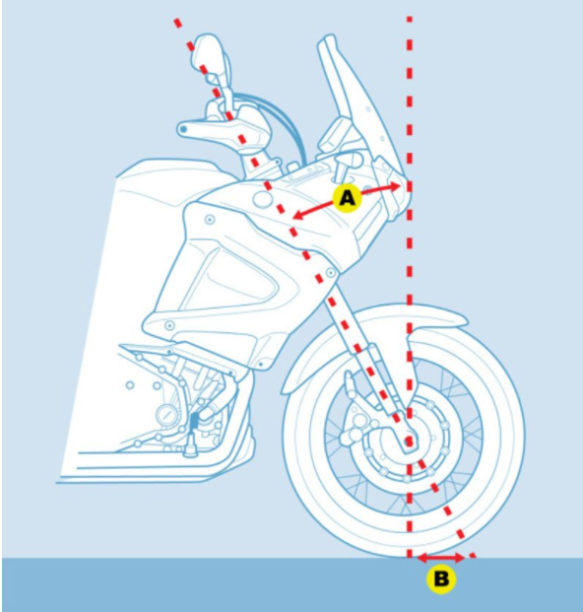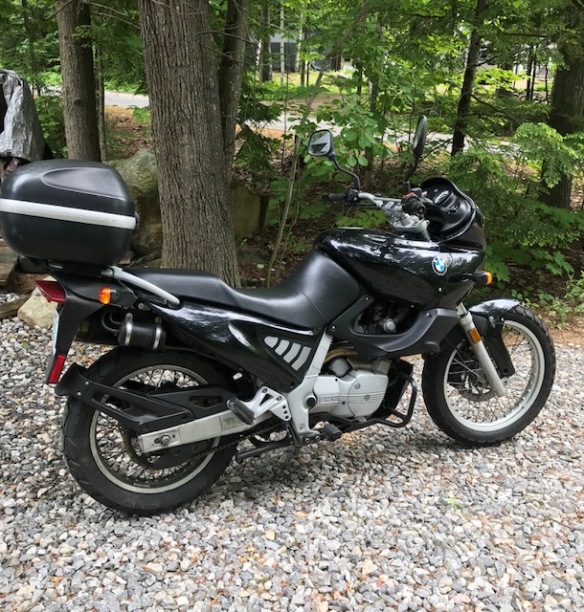Yes, I’ve seen those videos of a short guy riding a DRZ400 with a 37″ seat height, mounting it like a bicycle. And read about “sissies” who lowered their bikes only to reverse them back to the more manly original height. What’s the big deal about dropping a bike anyway? Some people do it several times a season.
On the other hand, most of the bikes on the road are low-seat cruisers. Why is that?
I also see Can Am Spyders and a surprising number of HD trikes and a few sidecar rigs like the vintage Ural up the street from me. Adding a third wheel helps keep the whole thing upright, but you lose a big part of the 2-wheel magic.
I can ride a tall bike, but I don’t have to. I could ride a short one. A light one. Or a three wheeler. But I have yet to find a bike that beats my 1997 BMW F650, all things considered, so why not just see if I can make it a little easier to ride.
The stock seat is 32″ high and about 10″ wide. It’s hard to stretch your legs over something that wide and still get your feet down onto the ground. My modest 30″ inseam doesn’t help.
I can flat foot it if I really work at stretching my legs over the narrowest part of the seat. Typically though, sitting at a light my heels are a bit off the ground or one foot flat down and the other touching down on the ball of the foot.
I had dropped the bike once, four years ago while duck-walking a turn over a rough spot in my primitive driveway. It was early days of getting back into motorcycling. That’s my excuse. Since then, I’ve managed to keep the rubber side down.
So I can manage 450 lbs. of relatively high center of gravity motorcycle with my feet not comfortably flat on the ground, but I thought I would see what a lower version would be like.
I bought a used $150 BMW lowering kit on eBay that included the longer links, shorter side-stand and shorter center-stand.
The links change out pretty easily with the bike on the center stand and the rear wheel removed. The side stand is easy and the center stand is a little less easy. The difficult part is stretching the stand return springs back on.
The seat is now 29.5″. I didn’t touch the front end.
Yes, it’s easier to handle the bike on rough or uneven ground or in parking lots, backing up and generally horsing it around in the driveway, but what I didn’t expect was the improvement in side wind gust resistance at speed on the highway. It tracks better and is more of a straight line machine than it was before.
Of course, it doesn’t steer quite as quickly as it did. Something to get used to. But I’m a conservative rider and it doesn’t seem to be a problem for my riding style. And I can still swerve around obstacles in the road.
Rake and Trail
The lowering kit increases the rake by about 3 degrees to 31, putting it into cruiser territory. The trail also increased and is now about 5 inches. Rake is the angle the fork makes with the vertical. If you extend this line to the pavement it will be in front of the point where the tire contacts the road and the distance between those two points is the trail. The rake/trail of a sport bike is typically 26/3, a dual sport 28/4, and a cruiser 32/5.

CycleWorld rake and trail illustration. A is the rake angle. B is the trail distance.
I could reduce the rake and trail by lowering the front end also, but I want to get used to it the way it is before changing anything.
Summary
It looks and feels a bit less dual sport and a bit more standard than it did before and that is okay with me.
Easier to handle when stopped on uneven ground. Easier to back up. Steering a little slower. It was probably too quick before anyway. Fantastic wind stability.
The original windshield is now throwing more rough air at my helmet so I want to try a taller windshield to see if I can quiet things down. As it is now, no windshield at all is better because the helmet air is not turbulent.

My ’97 F650 lowered to 29.5″ seat height
